40+ Sample Service Level Agreements
-

Proforma of Service Level Agreement
download now -
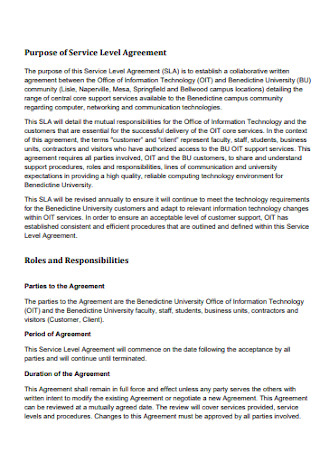
Purpose of Service Level Agreement
download now -
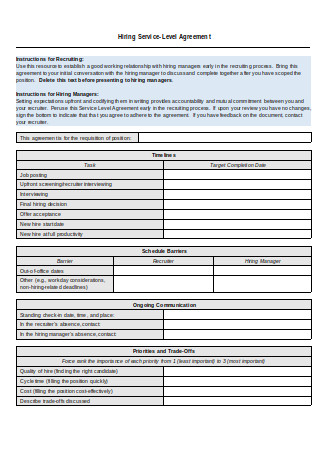
Hiring Service Level Agreement
download now -
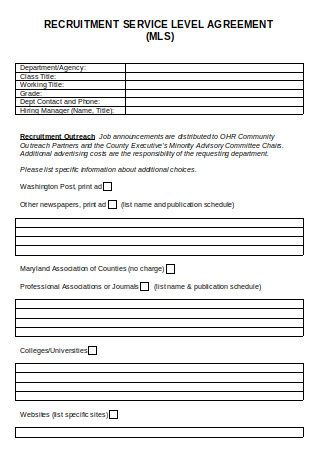
Recruitment Service Level Agreement
download now -
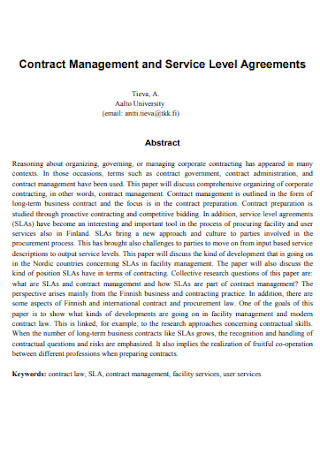
Contract Management and Service Level Agreement
download now -
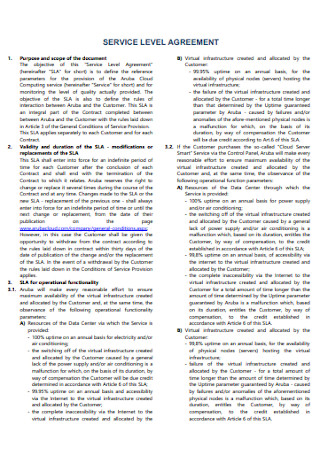
Sample Service Level Agreement
download now -
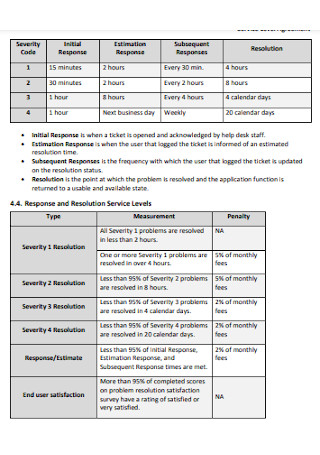
Simple Service Level Agreement
download now -
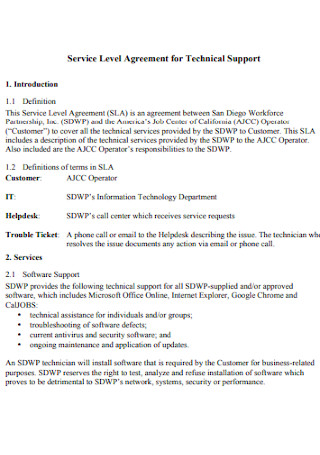
Service Level Agreement for Technical Support
download now -

Customer Service Level Agreement
download now -
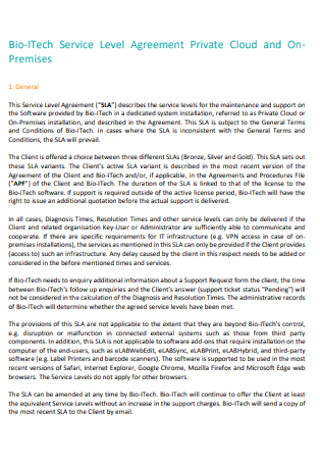
Bio-ITech Service Level Agreement
download now -
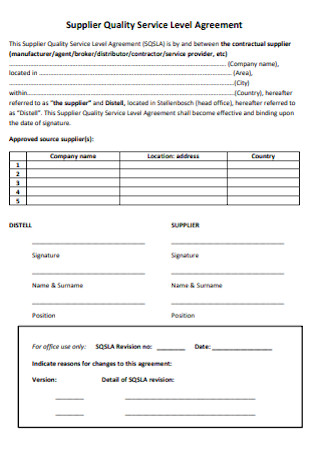
Supplier Quality Service Level Agreement
download now -
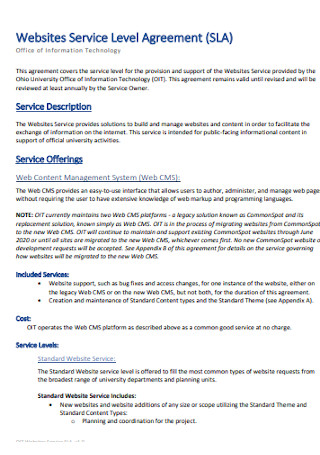
Websites Service Level Agreement
download now -
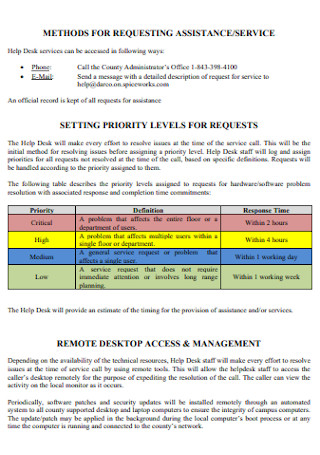
Help Desk Service Level Agreement
download now -

Client Service Level Agreement
download now -

Demystifying Service-Level Agreement
download now -
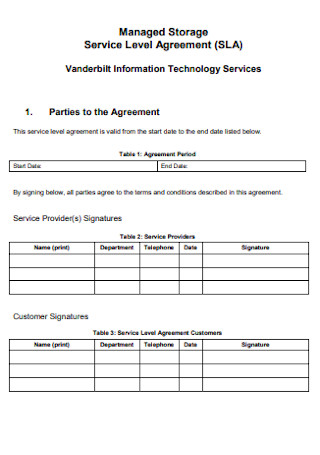
Managed Storage Service Level Agreement
download now -
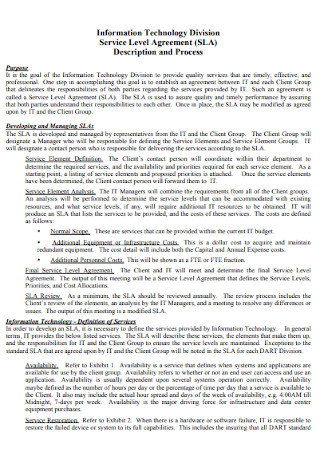
Technology Division Service Level Agreement
download now -
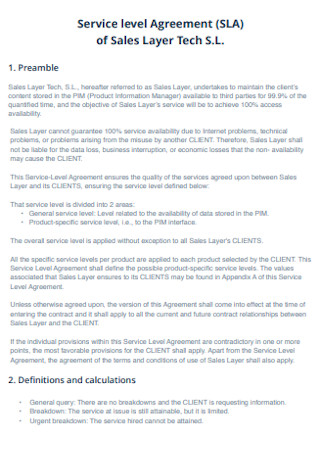
Sales Service Level Agreement
download now -

Airport Service Level Agreement
download now -
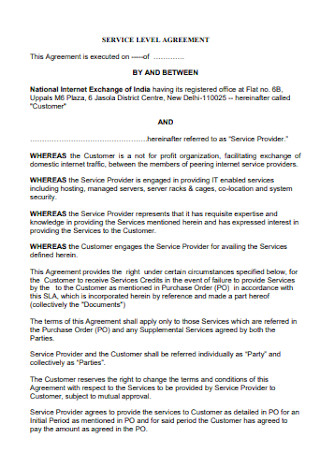
Basic Service Level Agreement
download now -
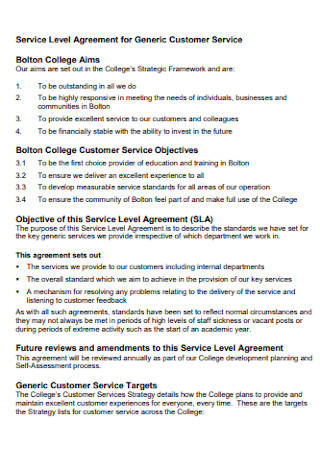
Service Level Agreement for Customer Service
download now -

Networx Service Level Agreement
download now -
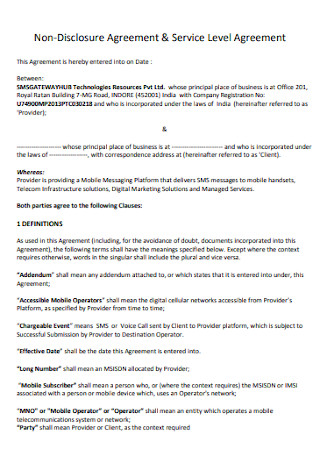
Non-Disclosure and Service Level Agreement
download now -
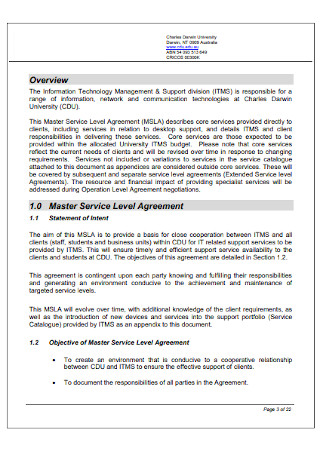
Master Service Level Agreement
download now -
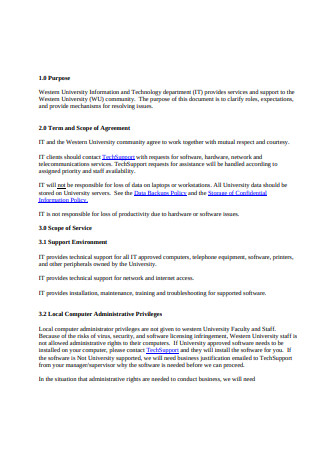
Employee Service Level Agreement
download now -
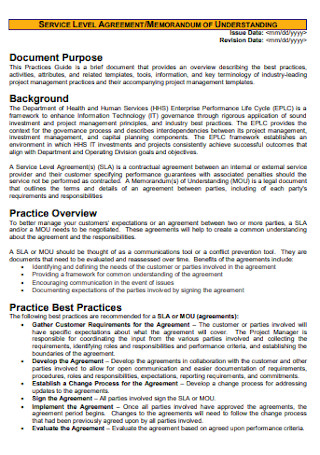
Service Level Memorandum Agreement
download now -
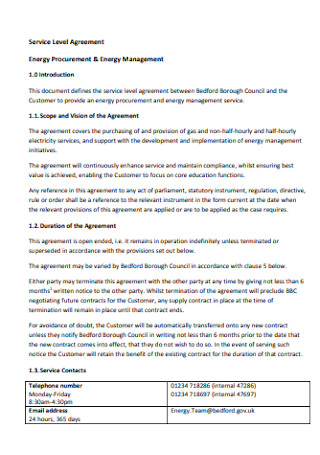
Energy Management Service Level Agreement
download now -
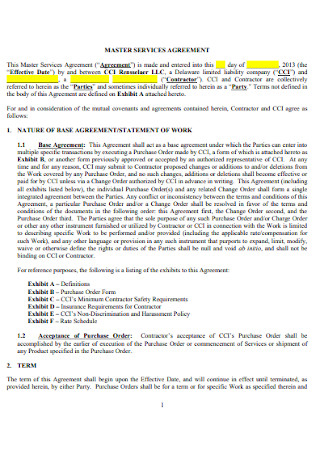
Master Service Level Agreement Template
download now -
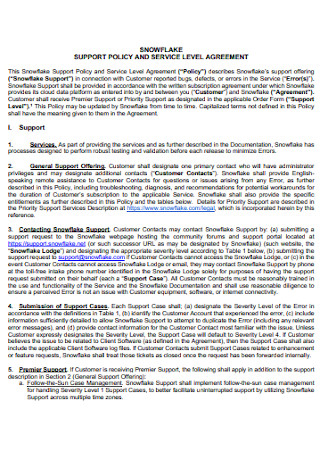
Support Policy and Master Service Agreement
download now -

Third-Party Service Level Agreement
download now -
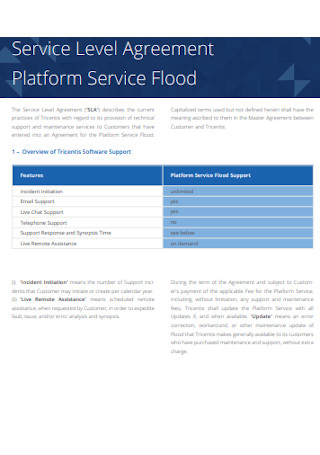
Platform Service Level Agreement
download now -
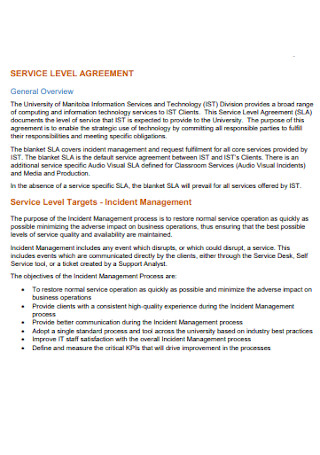
Standard Service Level Agreement
download now -
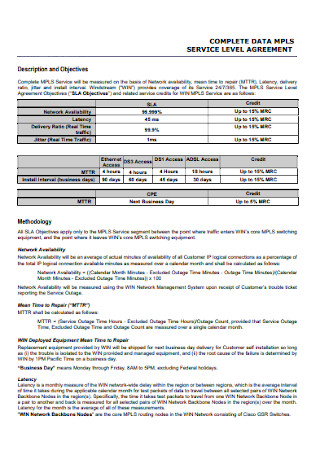
Data Service Level Agreement
download now -
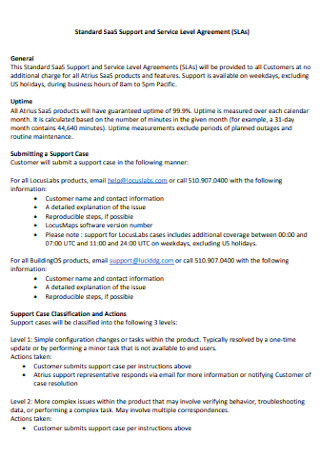
SaaS Support and Service Level Agreement
download now -
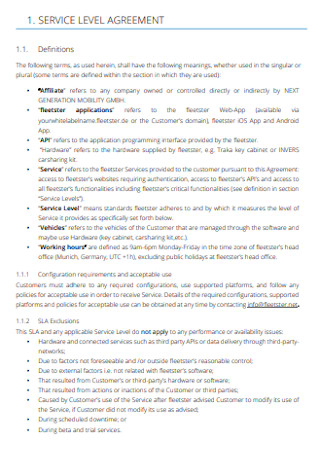
Formal Service Level Agreement
download now -
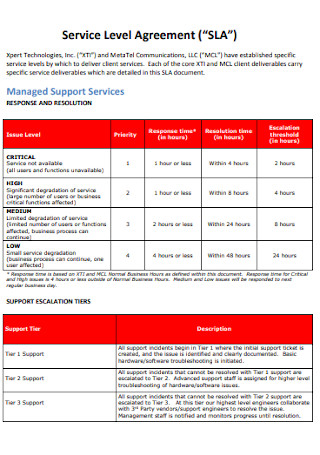
Company Service Level Agreement
download now -

Spanning Backup Service Level Agreement
download now -
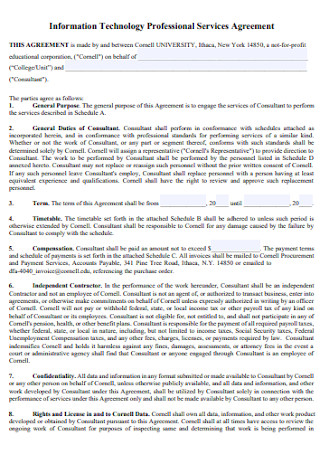
Professional Services Level Agreement
download now -

School Service Level Agreement
download now -
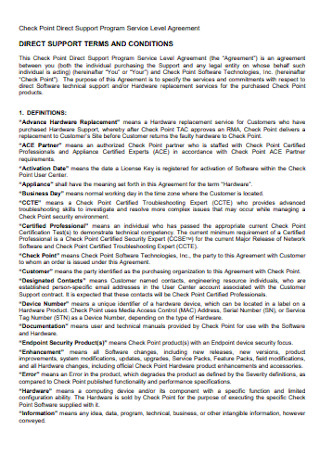
Program Service Level Agreement
download now -
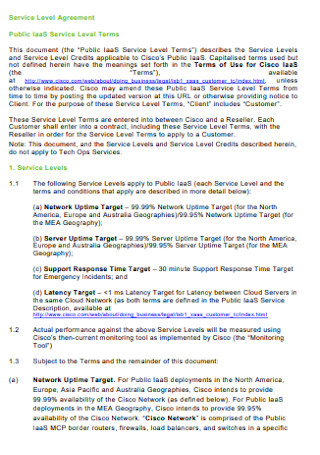
Public Service Level Agreement
download now
FREE Service Level Agreement s to Download
40+ Sample Service Level Agreements
What Is a Service Level Agreement?
Types of Service Level Agreements
Components of a Service Level Agreement
How To Create a Service Level Agreement
FAQs
What is the purpose of a service level agreement?
What is the definition of service level?
What is the service level agreement lifecycle?
That is why an organization must produce a document that contains the necessary information. A service level agreement proves helpful to the company to address these matters. What is a service level agreement, and what advantages or disadvantages does it bring to the business? Read through the article below and learn about the definition, components, and structure of the document. The text also answers frequently asked questions concerning the service level agreement.
What Is a Service Level Agreement?
A service level agreement or an SLA is a contract between a service provider and an end-user client or a consumer, stating the level of service a client expects from the company giving the service. The document also serves as a criterion for an organization’s internal business operations and daily activities. The company utilizes the service level agreement whenever a new customer signs up to avail of the organization’s services. In case the document exists between one department delivering a recurring service to another, the service level agreement must indicate details regarding the company’s sales and marketing objectives. It must also identify the number of leads it must generate monthly, quarterly, or annually and the action plans it must perform to support the other departments’ goals.
From the archives of the Massachusetts Institute of Technology entitled Crack The Code: Understanding safety stock and mastering its equations by Peter L. King, the desired service cycle for businesses to tolerate the eventuality of stockouts of products is 95 percent. Statistically, no more than five percent of the replenishment cycle of the company.
Types of Service Level Agreements
The purpose of service level agreements is to create a visible arrangement between the provider and user by communicating and setting specific expectations while mitigating problems and issues before they arise. Case in point, there are four types of service level agreements that an organization can use for particular purposes.
Components of a Service Level Agreement
The information within the service level agreement varies according to the type and purpose, an external or internal agreement. However, there are general provisions and sections of an SLA that must be present across several arrangements. Below are the fundamental components of a service level agreement, whether for your client list or business departments.
How To Create a Service Level Agreement
The communication between marketing and sales departments is of utmost importance. To achieve both teams reach their goals, producing a service level agreement is advantageous. The document holds both teams accountable for the expectations and fulfillment of goals within the SLA. Below is a guide to help you create a service level agreement for the company.
Step 1: Build Your Buyer Personas
For teams that work separately, there is a possibility that they capture different leads from one another, coming from different perceptions of being a good fit for the company. The situation often results in misalignments that influence the trend of attracting customers to your business. The sales and marketing departments must perfect their concepts of buyer personas. Buyer personas are representations of entities benefiting from your products or services, according to industry analysis and employee insight. Accurate information results in better sales.
Step 2: Define the Lead Stages
The organization must identify and classify the lead stages. The purpose of the lead stages is to aid the sales and marketing teams where probable customers are in their purchasing journey. Both teams must also agree on the action plans and quality standards to indicate the stages. It helps to set similar working definitions across all departments to guarantee that everyone is on the same page.
Step 3: Establish a Set of Unified Goals For the Organization
It is worth noting that the sales and marketing departments must work together to achieve a singular objective, and that is to generate income for the company. Allowing the members of each team to understand the goal through revenue figures helps them focus on the essential areas of improvement. You can also utilize the objectives to start a reporting structure, define the company KPIs, and begin a strategic plan.
Step 4: Determine the Marketing-to-Sales Handoff
After identifying the lead stages and revenue goals for the business, follow up with defining the handoff process. It is one of the most critical moments for a customer interacting with your company. When it comes to leads, timing is everything. An established handoff process eliminates any neutrality in terms of responsibilities. Send the advances from the marketing to the sales team as soon as possible to assure continuous progress.
Step 5: Establish a Lead Management in the Company
It is necessary to have a clear and defined set of responsibilities for every party within a service level agreement. As a critical component of the SLA, determine the possible stages of the purchasing journey of consumers, state accompanying responsibilities, and identify the entity responsible for lead management.
Step 6: Continually Review SLA Over Time
Like any other long-term agreement, the service level agreement needs revision along the way. Ensure there are appropriate assessment methods periodically to connect each process. It is essential to pursue a proactive approach and use reactive reviews. Remember that an SLA is dynamic in structure. It must always align with the company goals and present leads.
FAQs
What is the purpose of a service level agreement?
The agreement establishes and defines the level of service consumers expect from receiving a product or service from a provider. It also contains the necessary measurement parameters of the service, with the corresponding solutions and penalties if the agreed product or services are not met. It is especially crucial to have this document when the company plans to outsource services.
What is the definition of service level?
Service level, by definition, is the performance measurement of a system or service. Service levels are commonly in a percentage format for a specified goal. When it comes to telecommunication companies, it refers to achieving specified goals in handling customers. These goals are often in the form of successful and end call percentages, average call and hold time, and other measures that represent efficiency and productivity.
What is the service level agreement lifecycle?
The SLA lifecycle governs the service level agreement throughout its term of effectivity. The service level agreement lifecycle helps determine the stages or phases in the SLA and identifies the following transitions that occur on the next step.
Service level agreements are helpful documents to increase the effectiveness of services, increase reach to consumers, and improve company revenue. The SLA also aids the marketing and sales team in realigning their goals to achieve the best possible outcome for producing products and services for the company. Start making a service level agreement, both internal and external, to achieve the holistic goals of the company. The article provides service level agreement samples you can use for internal and external affairs of the business.
